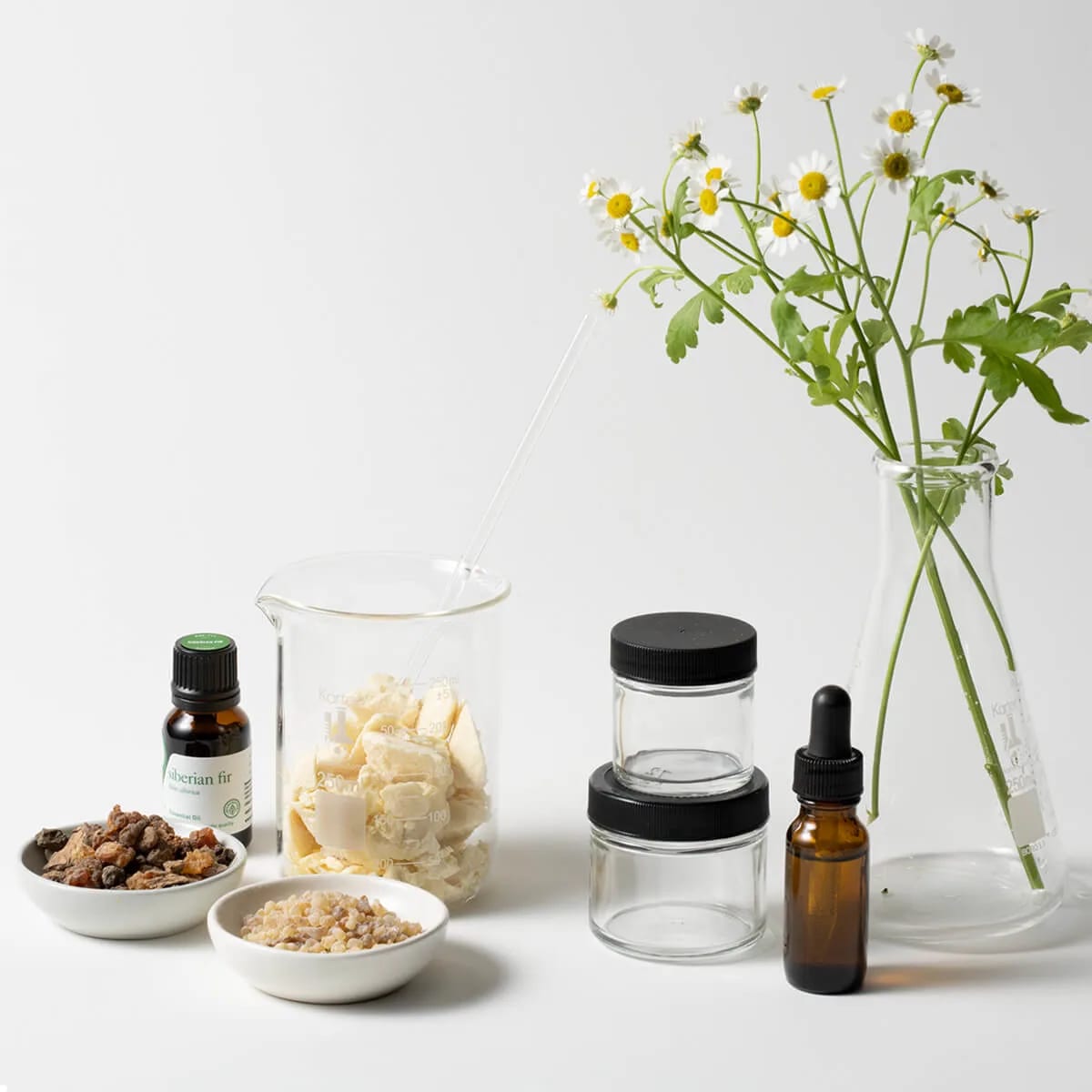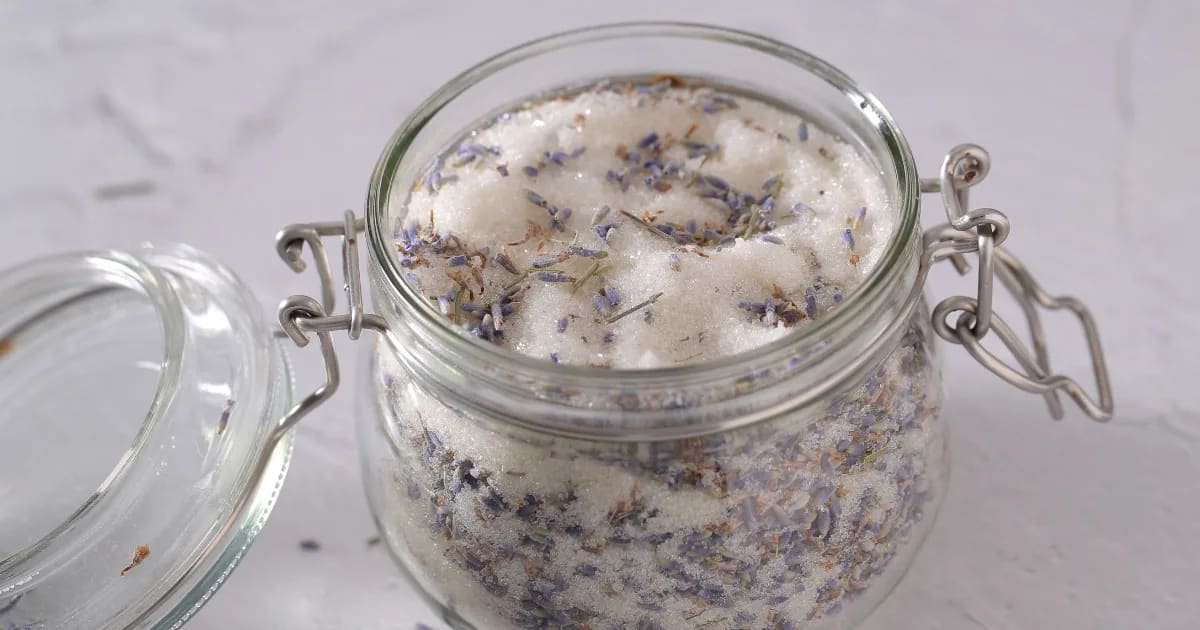Broad-Spectrum Antibacterial Cleaner with Cinnamon Bark Oil

Cinnamon Bark Oil: The Power of a Single Drop
One day, I was transferring Cinnamon Bark oil from a large bottle into a smaller one, something I often do so I can work with my essential oils conveniently. I am always intentional and careful during this process, but with Cinnamon Bark I am especially mindful, because the potent aldehydes in the oil can irritate the skin.
As I was finishing up, I felt a small area near my eye begin to burn. I suspected what had happened—during the pouring process, somehow a tiny droplet of Cinnamon Bark oil had splashed up onto my skin. I calmly completed my task and then immediately found a bottle of jojoba—a skin-nourishing carrier oil. I applied that to my face to dilute the Cinnamon Bark, and the burning sensation subsided.
I share this anecdote to illustrate how potent even a tiny amount of Cinnamon Bark is, and to demonstrate that we can work with it confidently when we understand how to use it safely.
In this post, you’ll discover how to safely blend with Cinnamon Bark oil to make a broad-spectrum antibacterial household cleaner.
We'll look at research that reveals why Cinnamon Bark oil’s aldehyde components are so powerful and discuss how to combine it with other oils to fight a variety of microbes. You’ll also get a clear overview of how to work with Cinnamon Bark oil safely, so you can use it with assurance.
Most oils rich in aldehydes have robust antimicrobial properties and accompanying safety concerns. When you understand the typical characteristics of aldehyde components, you then know that any essential oils with notable amounts of those components will share those general properties and safety considerations. This basic knowledge of chemical families can provide insight into various essential oils even without studying an individual oil (this is something that students in our Aromatherapy Certification Program learn to do)!
Cinnamon Bark Science
There is often some confusion as to whether Cinnamon Bark essential oil and Cinnamon Leaf essential oil are the same. Though they come from the same plant and have the same Latin name, Cinnamomum verum, it is important to be aware that they are very different oils. Learn more in my profile of Cinnamon Bark here.
One of the major differences between the two oils is in their chemical composition. Cinnamon Bark oil is dominated by cinnamaldehyde, a component that is known to be aggressive against microbes and irritating to the skin.
Cinnamaldehyde is considered a broad-spectrum antibacterial.
“Broad spectrum” means it can destroy both gram-positive and gram-negative bacteria. These are types of bacteria that differ in their physical structure and the manner in which they produce toxins. Gram-negative bacteria are considered “tougher” because they are more resistant to antibiotics.
Cinnamaldehyde’s ability to destroy both types of bacteria is attracting attention from researchers.
A 2023 study published in the journal Antibiotics found that cinnamaldehyde can disrupt bacterial cell walls. It can also “pass through the cell wall and start a process of inhibition and sterilization . . .”, meaning it penetrates the bacteria and destroys it from within.
Additionally, cinnamaldehyde is able to stop the formation of biofilm—the thin layer of slime-like substance that bacteria create to protect themselves from threats.
Beyond its notable ability to inhibit bacteria, cinnamaldehyde has exhibited impressive actions against viruses and fungi.
Blending with Cinnamon Bark
When it comes to making natural household cleaners, Cinnamon Bark is an excellent keystone oil for an antimicrobial blend. There are a host of aromatic possibilities when you are combining Cinnamon Bark with other powerhouse oils to combat germs!
For supercharged antimicrobial power: Try a “warrior oil,” like Oregano (Origanum vulgare). It has actions against many strains of drug-resistant bacteria. Or use Thyme ct thymol oil (Thymus vulgaris ct thymol), which has performed well against bacteria and airborne viruses.
Bee Balm oil (Monarda fistulosa) is another excellent option! Bee Balm is rich in carvacrol, which inhibits infection-causing bacteria and fungi. In one study, carvacrol completely inhibited 17 types of pathogenic fungi. (See my profile of Bee Balm here!)
Important reminder: aggressive antimicrobial “warrior oils” like Oregano, Thyme ct thymol, and Bee Balm can be very irritating to the skin and mucous membranes and need to be used with caution and respect.
For a fresh, evergreen scent: Experiment with including a few conifers—such as Siberian Fir oil (Abies sibirica). It has a crisp, piney aroma, and contains α-pinene, which is known to fight bacteria and viruses.
For a sparkly citrus note: Lemon oil (Citrus limon) is another superb choice, and it creates a beautifully layered aroma with Cinnamon! The d-limonene in Lemon “can significantly inhibit gram-negative and gram-positive bacteria as well as fungal activity.” Another broad-spectrum antibacterial!
Cinnamon Bark Safety
Cinnamaldehyde is a skin and mucous membrane irritant.
It’s important not to get Cinnamon Bark oil on your skin undiluted. If it does come into contact with your skin, immediately apply a nourishing carrier oil to the area (such as jojoba, olive, or coconut oil). This will help dilute the Cinnamon Bark oil. Then wash well with soap and water, and apply a carrier oil to the area again to soothe the skin.
If you’re including this essential oil in a topical blend, the safest amount is no more than 1 drop of Cinnamon Bark oil in 2 ounces (60 ml) of carrier oil.
To avoid irritating the mucous membranes, only use 1 drop in your diffuser, and no more than 1 drop in an inhaler.
Cinnamon Bark Recipe
This is a sanitizing recipe for household surfaces that includes high proof alcohol in combination with antimicrobial essential oils. You’ll notice this recipe has much more conifer oil than Cinnamon Bark. Cinnamon Bark’s aroma is very strong, and it can easily overpower its fellow oils in a blend. Just a few drops are enough to complement the scent of the conifers while still offering its potent antibacterial actions.
Regarding the conifers in this recipe, feel free to substitute any conifer oils you have. For example, Balsam Fir (Abies balsamea), Black Spruce (Picea mariana), and Hemlock (Tsuga canadensis) will work just as well as the oils in the recipe.

Cinnamon Bark Broad-Spectrum Cleaner
1 fl oz (30 ml) 190-proof alcohol (I use Everclear)
3 fl oz (120 ml) water
27 drops Siberian Fir oil (Abies sibirica)
27 drops White Pine oil (Pinus strobus)
14 drops Cinnamon Bark oil (Cinnamomum verum)
Directions
Pour the alcohol and essential oils into the 4 oz (120 ml) spray bottle. The alcohol helps to solubilize the essential oils, ensuring they disperse evenly in the blend, and it also acts as a preservative.
Let the mixture of alcohol and essential oils sit for about an hour. This resting period is important for the alcohol to effectively solubilize the essential oils.
Fill the rest of the bottle with water, or with your preferred hydrosol, such as Lavender or Thyme. Hydrosols bring their own therapeutic benefits and a subtle, natural fragrance to the blend, enhancing its overall effect and aroma.
Shake the blend well before every use. This helps to mix the essential oils, alcohol, and water or hydrosol together, maintaining a consistent quality in every spray.
Use this blend to clean countertops, doorknobs, cabinet handles, and sinks. It's effective for removing everyday grime and leaves a fresh, foresty, spicy scent.
Before using it on any surface, test the spray on a small, inconspicuous area to ensure that the surface doesn’t react adversely to the blend.
My Takeaway
Cinnamon Bark oil is a testament of nature’s potency! When we understand its properties and respect its strength, we can blend with Cinnamon Bark thoughtfully and safely to unlock its full potential as a natural and effective household cleaner.

Component Blending
References
Astani A, Reichling J, Schnitzler P (2010) Comparative study on the antiviral activity of selected monoterpenes derived from essential oils. Phytotherapy Research 24(5):673-9. doi: 10.1002/ptr.2955
Chang, S. T., Chen, P. F., & Chang, S. C. (2001). Antibacterial activity of leaf essential oils and their constituents from Cinnamomum osmophloeum. Journal of ethnopharmacology, 77(1), 123–127. https://doi.org/10.1016/s0378-8741(01)00273-2
Da Silva AC, Lopes PM, de Azevedo MM, Costa DC, Alviano CS, Alviano DS. (2012) Biological activities of a-pinene and ß-pinene enantiomers. Molecules 2012 17, 6305–16.
Doyle, A. A., & Stephens, J. C. (2019). A review of cinnamaldehyde and its derivatives as antibacterial agents. Fitoterapia, 139, 104405. https://doi.org/10.1016/j.fitote.2019.104405
Elcocks, E. R., Spencer-Phillips, P. T. N., & Adukwu, E. C. (2020). Rapid bactericidal effect of cinnamon bark essential oil against Pseudomonas aeruginosa. Journal of applied microbiology, 128(4), 1025–1037. https://doi.org/10.1111/jam.14538
Han, Y., Sun, Z., & Chen, W. (2019). Antimicrobial Susceptibility and Antibacterial Mechanism of Limonene against Listeria monocytogenes. Molecules (Basel, Switzerland), 25(1), 33. https://doi.org/10.3390/molecules25010033
Hayashi, K., Imanishi, N., Kashiwayama, Y., Kawano, A., Terasawa, K., Shimada, Y., & Ochiai, H. (2007). Inhibitory effect of cinnamaldehyde, derived from Cinnamomi cortex, on the growth of influenza A/PR/8 virus in vitro and in vivo. Antiviral research, 74(1), 1–8. https://doi.org/10.1016/j.antiviral.2007.01.003
Inouye, S., Takizawa, T., & Yamaguchi, H. (2001). Antibacterial activity of essential oils and their major constituents against respiratory tract pathogens by gaseous contact. Journal of antimicrobial chemotherapy, 47(5), 565-573.
Lang, G. and Buchbauer, G. (2012) A review on recent research results (2008-2010) on essential oils as antimicrobials and antifungals. A review. Flavour and Fragrance Journal 27, 13-39.
Lu, M., Dai, T., Murray, C. K., & Wu, M. X. (2018). Bactericidal Property of Oregano Oil Against Multidrug-Resistant Clinical Isolates. Frontiers in microbiology, 9, 2329. https://doi.org/10.3389/fmicb.2018.02329
Tantaoui-Elaraki, A., & Beraoud, L. (1993). Inhibition of growth and aflatoxin production in Aspergillus parasiticus by essential oils of selected plant materials. Journal of environmental pathology, toxicology and oncology: official organ of the International Society for Environmental Toxicology and Cancer, 13(1), 67-72.
Usai, F., & Di Sotto, A. (2023). trans-Cinnamaldehyde as a Novel Candidate to Overcome Bacterial Resistance: An Overview of In Vitro Studies. Antibiotics (Basel, Switzerland), 12(2), 254. https://doi.org/10.3390/antibiotics12020254





